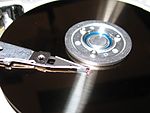- Database forensics
-
Forensic science 
Physiological sciences Forensic anthropology
Forensic archaeology
Forensic dentistry
Forensic entomology
Forensic pathology
Forensic botanySocial sciences Forensic psychology
Forensic psychiatryForensic criminalistics Ballistics
Ballistic fingerprinting
Body identification
DNA profiling
Fingerprint analysis
Forensic accounting
Forensic arts
Forensic footwear evidence
Forensic toxicology
Questioned document examination
Vein matchingDigital forensics Computer forensics
Database forensics
Mobile device forensics
Network forensics
Forensic videoRelated disciplines Fire investigation
Detection of fire accelerants
Forensic engineering
Forensic linguistics
Forensic materials engineering
Forensic polymer engineering
Vehicular accident reconstructionPeople Auguste Ambroise Tardieu
Edmond Locard
William M. Bass
Juan VucetichRelated articles Crime scene
CSI effect
Perry Mason syndrome
Pollen calendar
Skid mark
Trace evidence
Use of DNA in forensic entomologyDatabase Forensics is a branch of digital forensic science relating to the forensic study of databases and their related metadata.[1]
The discipline is similar to computer forensics, following the normal forensic process and applying investigative techniques to database contents and metadata. Cached information may also exist in a servers RAM requiring live analysis techniques.
A forensic examination of a database may relate to the timestamps that apply to the update time of a row in a relational table being inspected and tested for validity in order to verify the actions of a database user. Alternatively, a forensic examination may focus on identifying transactions within a database system or application that indicate evidence of wrong doing, such as fraud.
Software tools such as ACL, Idea and Arbutus (which provide a read-only environment) can be used to manipulate and analyse data. These tools also provide audit logging capabilities which provide documented proof of what tasks or analysis a forensic examiner performed on the database.
Currently many database software tools are in general not reliable and precise enough to be used for forensic work as demonstrated in the first paper published on database forensics.[2] There is currently a single book published in this field,[3] though more are destined.[4] Additionally there is a subsequent SQL Server forensics book by Kevvie Fowler named SQL Server Forensics which is well regarded also.[5]
The forensic study of relational databases requires a knowledge of the standard used to encode data on the computer disk. A documentation of standards used to encode information in well known brands of DB such as SQL Server and Oracle has been contributed to the public domain.[6][7]
Further reading
- Farmer and Venema, 1999, http://www.porcupine.org/forensics/forensic-discovery/appendixB.html
- Sarbanes Oxley section 404 – enforce financial standards to limit chance of fraud. http://thecaq.aicpa.org/Resources/Sarbanes+Oxley/
- HIPAA – Health and Portability Act http://www.cms.hhs.gov/hipaa/
- Sarbanes Oxley section 404 – enforce financial standards to limit chance of fraud http://thecaq.aicpa.org/Resources/Sarbanes+Oxley/
- Fair Credit Reporting Act (FCRA) http://www.gao.gov/new.items/d06674.pdf
- Oracle Forensics In a Nutshell, Paul M. Wright (May 2007) http://www.oracleforensics.com/wordpress/wp-content/uploads/2007/03/OracleForensicsInANutshell.pdf
- Oracle Forensics, Paul Wright, Rampant Techpress, ISBN 0977671526, May 2008. http://www.rampant-books.com/book_2007_1_oracle_forensics.htm
References
- ^ Olivier, Martin S. (March 2009). "On metadata context in Database Forensics". Science Direct. doi:10.1016/j.diin.2008.10.001.. http://www.sciencedirect.com/science/article/B7CW4-4TSD9G6-1/2/a5031117d753054d92f2afba332eadf8. Retrieved 2 August 2010.
- ^ Oracle Database Forensics using LogMiner - GIAC Certified Student Practical
- ^ Oracle Forensics ISBN 0977671526 (May 2008)
- ^ Oracle Forensics Using Quisix ISBN 047019118X (Dec 2008)
- ^ SQL Server Forensics ISBN 0321544366 (Dec 2008)
- ^ SANS Institute - Forensic Analysis of a SQL Server 2005 Database Server
- ^ Oracle Forensics and Incident Response - databasesecurity.com
Branches Computer forensics • Mobile device forensics • Network forensics • Database forensics • Windows To GoHardware Software EnCase • FTK • PTK Forensics • The Sleuth Kit • The Coroner's Toolkit • COFEE • Selective file dumper • HashKeeperCertification Processes / Topics Organisations National Software Reference Library • American Society of Digital Forensics & eDiscovery • HTCIA • Department of Defense Cyber Crime Center • NHTCU • AHTCCPeople Eoghan Casey • Clifford Stoll • Erik LaykinCategories:- Databases
- Digital forensics
Wikimedia Foundation. 2010.
